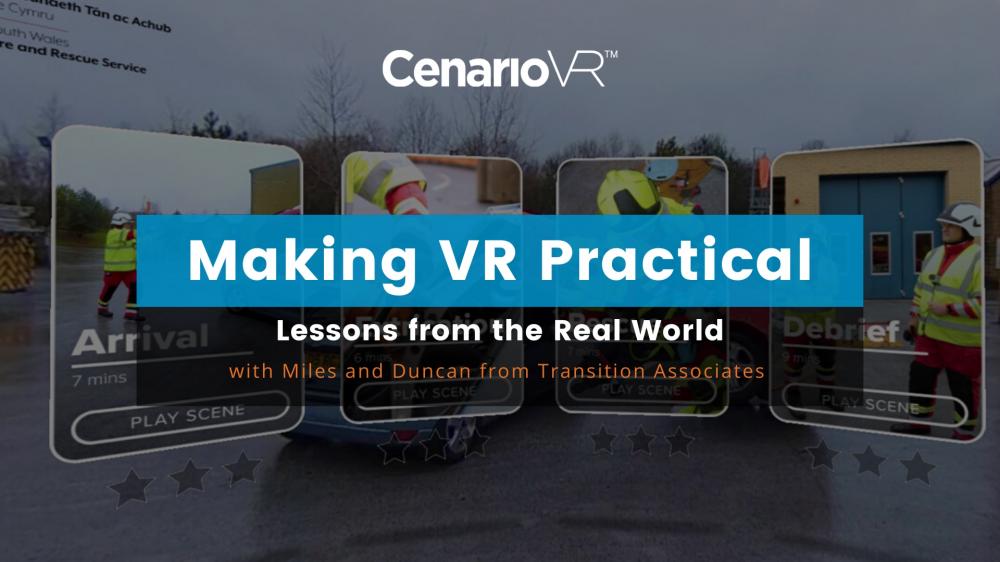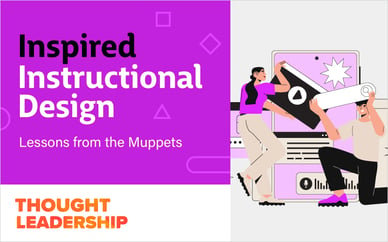
We recently welcomed Miles Corbett and Duncan Brown from Transition Associates for a great webinar, which focused on how to create immersive learning with CenarioVR, while making virtual reality training practical.
Why Use VR in Your Training?
Immersive learning tends to be more effective than traditional eLearning. It has been proven to increase learning retention and can achieve better outcomes in less time. It has also been proven to increase empathy, which is critical for DEI (Diversity, Equity, and Inclusion Training).
Examples of applications for immersive learning include:
- Induction/onboarding training
- Healthcare training
- Patient education
- Touring a facility
- Disaster preparation & training first responders
- Sales training
- And more!
Hot take: Studies show that virtual reality training achieves better outcomes in less time. VR is particularly great for any training where spatial awareness is important or the equipment to be used is dangerous or expensive.
Transition Associates uses CenarioVR to author immersive learning content with 360-degree photographs and videos. Miles and Duncan started off by showing an example of an immersive training video with hot spots they created using CenarioVR. They also showed how their immersive learning videos trained Fendi sales associates to prevent in-store theft.
Plus, they were able to analyze detailed training results using xAPI. CenarioVR includes built-in xAPI tracking. This is unique because no other VR authoring tool currently has this feature! By having this capability within CenarioVR, you can publish content to the web, mobile devices, and headsets, and then upload results directly to an LMS (learning management system) and gain greater insights about your learners’ progress.
While 360-video production can have its challenges, once content is uploaded into CenarioVR, you never have to hand-code anything. Prior to the creation of CenarioVR, immersive learning had to be hand-coded.
As Miles said, “When CenarioVR came out, we knew it would change the game.”
One of Miles’ and Duncan’s favorite CenarioVR features is the “Go-To” feature. Since virtual reality doesn’t have a “Next” button, you can use this feature to move the next scene into your learner’s field of view and alert them. This helps keep the training moving and engage the learner.
CenarioVR makes it easy to author interactive immersive learning with 360-degree videos and photographs. The VR training content is easy to share and view on the web, mobile devices, and headsets, so your learners can view it no matter what device they have.
In addition, you can embed CenarioVR training into Lectora and have a SCORM-compliant learning solution. If you don’t have Lectora (or another authoring tool), don’t worry. CenarioVR has full branching capabilities and variable support built-in. In other words, the only difference between authoring traditional content versus immersive content is that your canvas changes. Instead of using slides, you are working with spherical photos or videos.
Watch the webinar recording at the end of this post to see examples of VR training solutions created for South Wales Fire and Rescue, Fendi, construction and manufacturing clients, and more.
Tips for Building a Great VR Training Solution
One of the benefits of 360-degree video projects is that they don’t take very long to film, allowing you to quickly deploy your new training. However, there are a few differences when filming a 360-degree video. Miles and Duncan shared the lessons they learned from each new project they worked on. Here are a few of their tips—watch the recording below for the rest!
- Production of a great 360-degree course is all down to good planning.
- Use a monopod and have fixed camera points—don’t walk and carry the camera.
- VR instructional design requires a slightly different perspective—focus on experiential learning and how you can immerse the learner in the situation.
Watch the Webinar Recording for All the Tips and Examples:
Sign up for a free trial to experience CenarioVR in action.







